
Process

Process
The finely cut bamboo strips used for weaving are called ‘takehigo.’ The process of creating these strips starts with dividing the ‘marutake’ (round bamboo). First of all the bamboo pieces are cut up to the required length and divided in half lengthways. This is ‘takewari’. These strips are then repeatedly split in half (a process called ‘hegi’ (2.)) until they are close to the desired width and thickness.
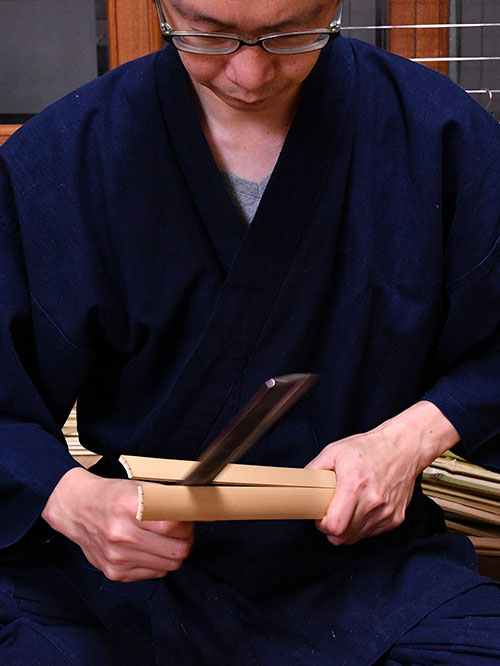
The process of progressively splitting the bamboo between outer layer and inner core to the appropriate width is called ‘hegi.’ After the bamboo pieces are divided in half lengthways (1. takewari), they are split in half (hegi). The process is alternately repeated until the strips are close to the required width and thickness. Only the outer layer is used for bamboo basket making.
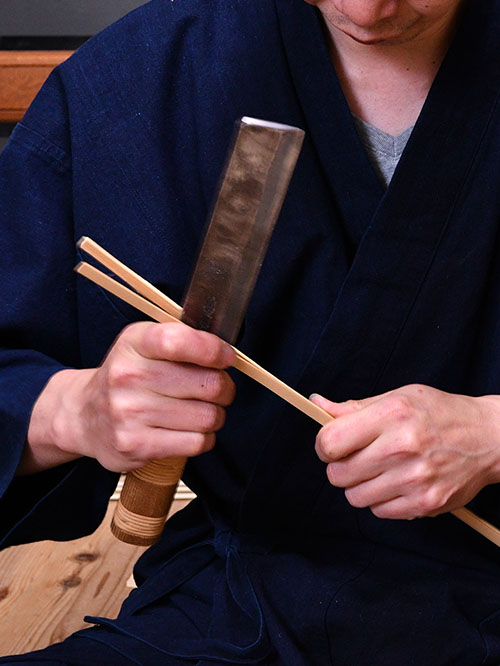
This is the process of trimming the strips to ensure they are all of uniform width. There are special tools available for this purpose, but at our workshop we use small blades for ‘habahiki’ and perform the process by hand. It is no exaggeration to say that “beautiful bamboo craftwork requires beautiful bamboo strips ,” so it is vital that the strips are of uniform width.
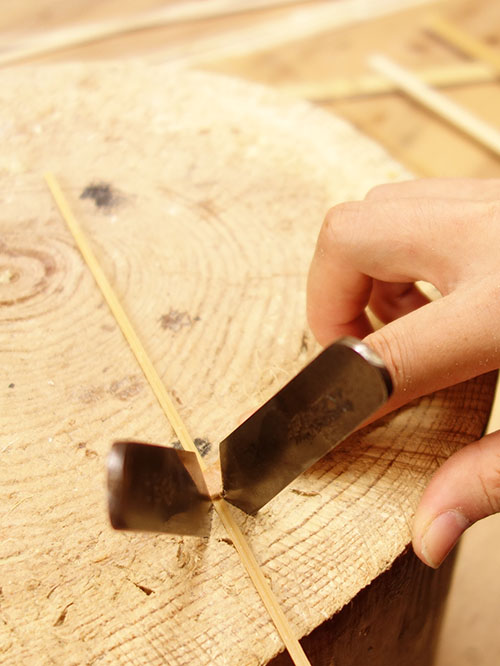
The edges of the strips are chamfered to make them smooth.
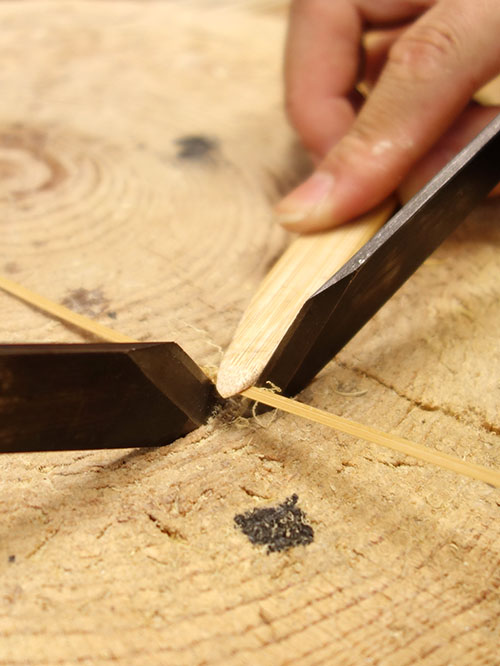
The backs of the strips are frayed after splitting, so they are shaved down with a knife. The thickness of the bamboo strips used for our bamboo basket bags varies from bag to bag. The thinnest strips are around 0.2mm thick. This process aligns the thickness to ensure the strips are all of uniform thickness.
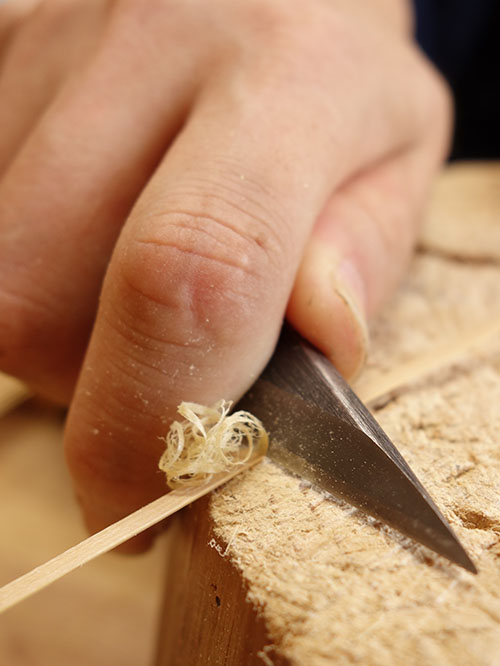
The next step is to color the strips with dye. Our bamboo bags are usually made with two kinds of tinted bamboo strips, light brown and dark brown. The outer layer of bamboo is covered with enamel which makes it extremely difficult to apply dye or lacquer, so this is scraped off right at the start of the process before the bamboo pieces are split.
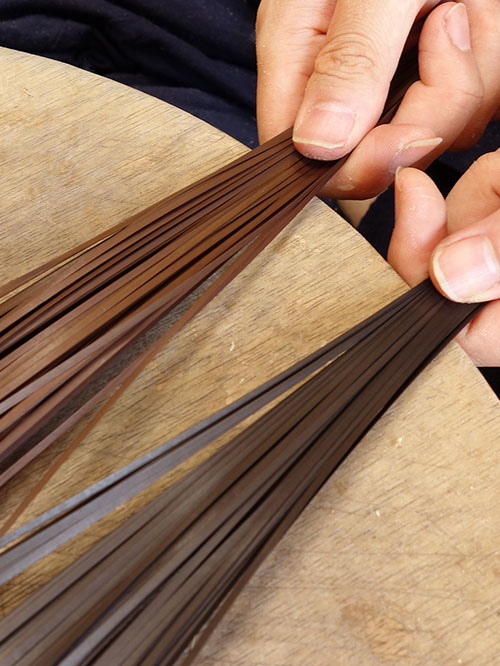
Once the bamboo strips are prepared, they can be woven together to create the basket. Although the strips are very thin, the actual process of weaving can create unevenness by pushing the strips outwards. The artisan therefore holds the bamboo down and weaves the bamboo without leaving any gaps.
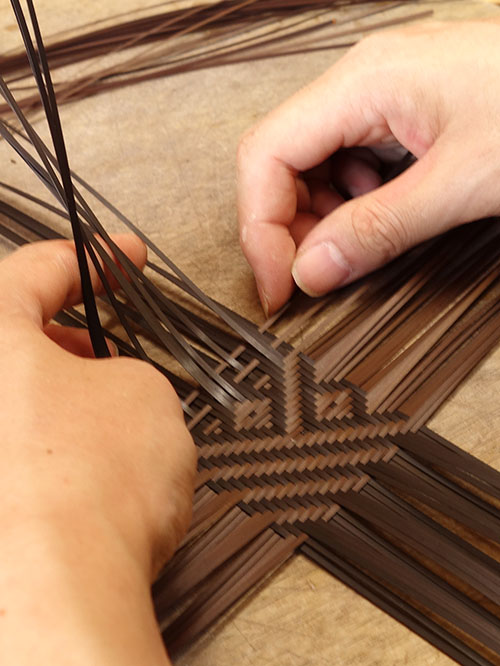
Himage is the process of heating and bending bamboo (strips). We use this technique to make the rims of our basket bags. Thin strips of bamboo tend to snap back when pushed or bent. However, provided the strips are the right width and thickness, they can be bent into shape by gently applying heat to soften the bamboo fibers. However, if the bamboo gets too hot, it burns or breaks, so absolute concentration is required.
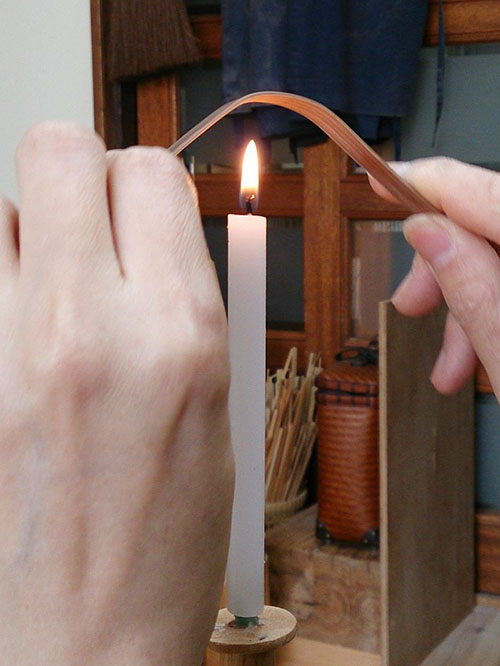
Finely cut strips of rattan are entwined round the edges of the basket bag. ‘To-kagari’ is a vital part of the production process to ensure the basket is sturdy and looks good. If the rattan is loose, the whole structure will be weak. If the stitching is uneven, this will ruin the rest of the appearance of the carefully woven basket. Therefore the artisan needs to use just the right amount of strength.
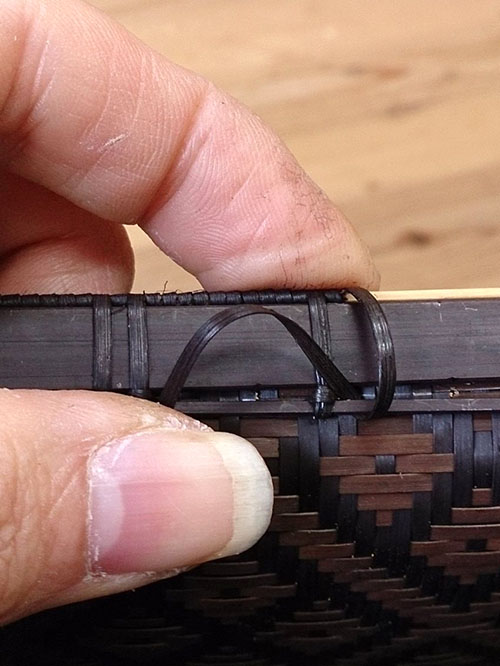
Urushi is the natural resin lacquer from the urushi tree. Just as wooden tables are polished and coated with oil and resin, urushi is used as lacquer for our bamboo bags. The woven surface of the basket is uneven, so this is not like painting on a flat surface. The lacquer must be applied carefully so as to avoid accumulation in the hollow spaces, or uneven and unpainted sections. Painting and drying is repeated three times for thoroughness. Air humidity affects the curing process for the lacquer. Therefore, to ensure optimal conditions for drying, the bag is placed in a room with controlled humidity (called a ‘muro’) to dry.
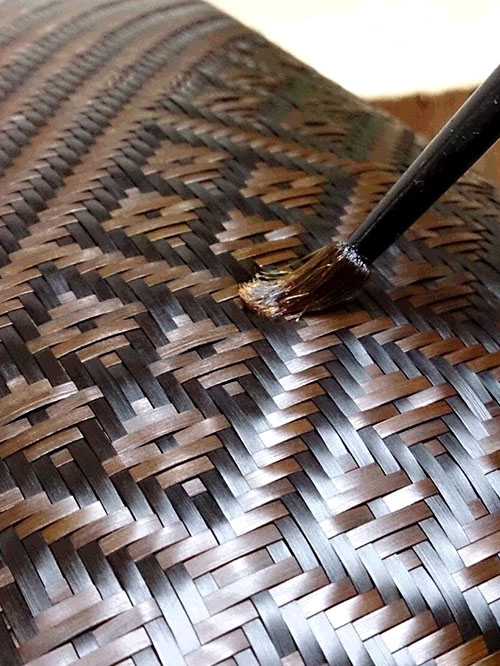
The distinguishing feature of our bags is that the component parts of the bags (for clutch bags, the left and right baskets; for briefcases the main bag and lid) are all of the same respective size and shape without any gaps in the weaving. Production to these specifications requires extreme skill on the part of the artisans and is different to the process for ordinary bamboo bags that just have a single basket.
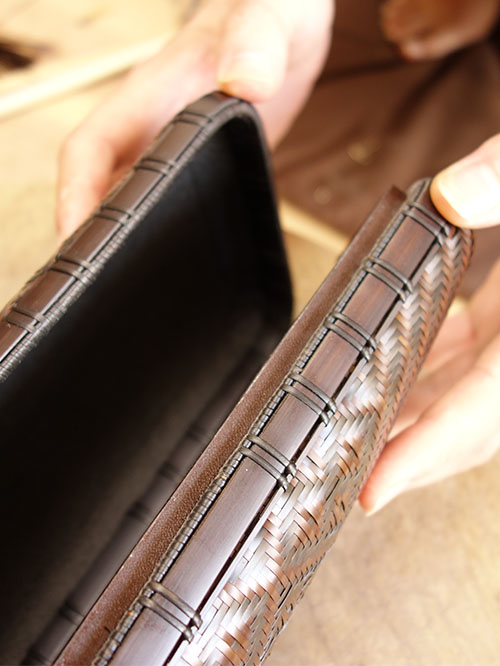
Our bags are polished with ibota wax (insect wax) to add gloss and prevent the bamboo from splitting. Ibota wax is produced from wax secreted by the ‘ibota-ro-mushi’, an insect that is a parasite of Japanese privet. It is a solid wax with a relatively high melting point, that is frequently used for polishing bamboo. The old adage is that the oil from one’s hands adds the perfect finish to a bamboo bag. However, that is a process that takes many years. At Kisetsu we treat our bags with ibota wax which protects the bags and serves as a finish that can then be enhanced naturally through constant use.
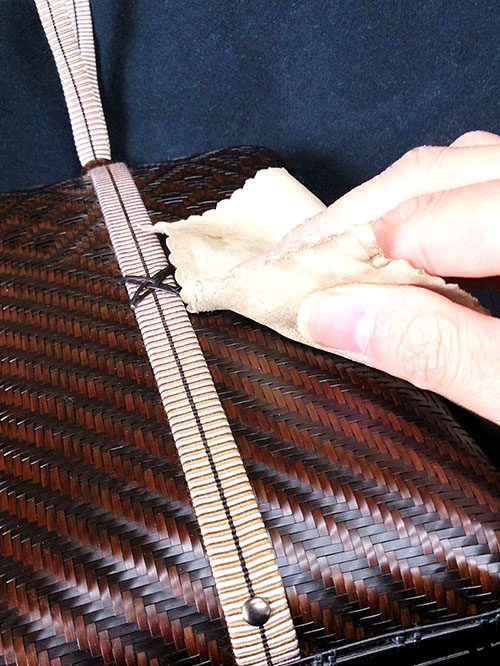
Our bamboo basket bags are custom made to order. Please use the Inquiries form to contact us.
Delivery times and shipping costs vary depending on the specific product, size of order and availability of materials.
We will be happy to give you more details upon inquiry or when you place your order.
Overseas shipment: the recipient is the importer of record and must comply with all laws and regulations of the destination country. You may be subject to any import duties VAT, taxes and other charges that are levied once the package reaches the country of destination. Tariffs and customs policies vary widely from country to country. We have no control over these charges and cannot predict what they may be. Please contact your local customs office for more information.